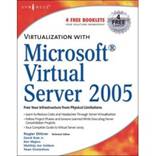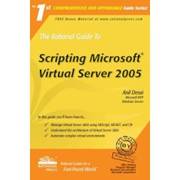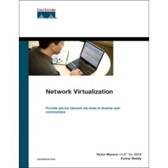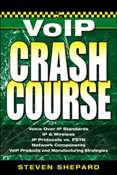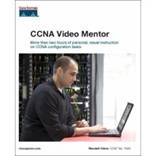Virtualization With Microsoft Virtual Server 2005
Virtualization With Microsoft Virtual Server 2005 (Syngress Publishing) is a comprehensive tutorial on using Microsoft Virtual Server 2005R2. The book is well-written and easy to read and can bring you up to speed much faster than reading through the Help file for the product. Virtualization is a big topic for enterprises nowadays as it can save on hardware costs by making more appropriate use of your hardware resources, and if you’re looking for one good introduction to the product, this is it. I found the Troubleshooting chapter at the end of the book particularly useful.
The Rational Guide To Scripting Microsoft Virtual Server 2005
The Rational Guide To Scripting Microsoft Virtual Server 2005 (Rational Press) is a good book if you need to go beyond the basics of working with Virtual Server 2006. This short but useful book covers how to manage Virtual Server 2004 using VBScript, VB.NET and C# and goes deeper into the architecture of how the product works. Scripting is definitely the way to go in enterprise environments where you need to automate complex tasks to make them simpler to perform, and this book helps a lot in this regard. Another great resource for scripting Virtual Server tips and tricks is The Virtual PC Guy’s WebLog, the blog of Ben Armstrong, Program Manager of Microsoft’s Virtual machine team. Armed with this book from Rational and Ben’s blog, plus my scripting articles here on WindowsNetworking.com, you should be able to do a lot!
Network Virtualization
Network Virtualization (Cisco Press) looks at a different aspect of virtualization that you need to know about—virtualizing your network infrastructure to better service the needs of your business. Virtual networks are another name for security zones that isolate logical networks within your physical network for greater security. By combining together layer-2 VLANs with layer-3 VPN technologies, you can create end-to-end hierarchical virtual networks that are more secure and easier to manage than traditional structured networks. Although the focus of this book is Cisco products and technologies, the lessons learned apply to all types of networks including Windows-based ones, and the book focuses less on IOS configuration and more on planning and architecture, which means it’s useful for IT pros of any platform-preference to peruse.
Voice Over IP Crash Course
Voice Over IP Crash Course (McGraw-Hill) is just what you need if you want to come up to speed fast on VOIP standards, protocols, implementation procedures and products. The book takes a high-level conceptual approach to demystifying the subject, and author Steven Shepard does a good job in this regard. It’s surprising in some ways that momentum for transitioning to VOIP has begun to slow down, and enterprises need to understand the issues and choices involved so they can make informed decisions whether to move to VOIP or not—this book helps point the way.
CCNA Video Mentor
CCNA Video Mentor (Cisco Press) is last but not least on my list of things to read—or watch rather. This title is a combination workbook and DVD-Rom that provides more than two hours of visual instruction on how to perform basic CCNA configuration tasks. If you’re an IT pro who wants to get ahead—both career-wise and salary-wise—then getting familiar with Cisco platforms and products is one of the avenues you can pursue, and this book/video combination helps get you started fast towards the entry-level Cisco Certified Network Associate certification. Sure, the 90s are over, but that’s no reason to become complacent in your career!
